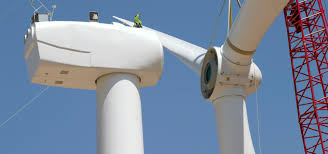Discover innovative renewable energy projects in Asia, which are transforming sustainable development, especially in rural areas. These projects, including solar panels and wind farms, play a crucial role in communities distant from traditional energy grids.In recent years, renewable energy projects in Asia have made significant strides. Countries across the continent are investing heavily in solar, wind, and hydropower projects to meet their energy needs sustainably and reduce reliance on fossil fuels.
Primary Energy Source in Asia: Renewable Energy Projects
In Asia, coal remains the primary energy source. This fossil fuel is widely used in many Asian countries for electricity production and industrial purposes. China and India, for example, heavily depend on coal due to its abundant reserves and relatively low cost. However, this dependency has severe environmental consequences, including high levels of air pollution and greenhouse gas emissions.
What Renewable Energy Resources in Asia? Discover Key Projects
Asia boasts a diverse range of renewable resources, including:
1. Solar Energy:
In countries like India, China, and Japan, numerous photovoltaic projects harness solar energy on both small and large scales.
2. Wind Energy:
The vast plains and coastal areas of countries such as China, India, and Pakistan offer significant potential for wind energy.
3. Hydropower:
The powerful rivers and water resources in countries like China, India, Bhutan, and Nepal are ideal for hydropower projects.
4. Biomass:
Particularly used in rural areas, biomass allows for energy production from agricultural waste and forest residues.
5. Geothermal Energy:
Found in Indonesia and the Philippines, this energy uses Earth’s heat to generate electricity and heating.
Which Asian Country Produces the Most Renewable Energy?
China is the undisputed leader in renewable energy production in Asia and even globally. The country has invested heavily in developing its solar, wind, and hydropower capacities. In 2020, China accounted for about 30% of the world’s total installed renewable energy capacity. China’s commitment to renewable energy is driven by the need to reduce air pollution and diversify energy sources to improve energy security.
What Types of Energy are Being Developed in China and Why?
In China, several types of renewable energy are being actively developed:
1. Solar Energy:
China has the largest installed capacity of photovoltaic solar panels in the world. Solar projects are expanding, particularly in the northwestern desert regions where sunlight is maximized.
2. Wind Energy:
China is also the global leader in installed wind capacity. Wind farms are rapidly developing both onshore and in coastal areas where winds are particularly strong.
3. Hydropower:
With flagship projects like the Three Gorges Dam, China has immense hydropower capacity. The country’s numerous rivers and streams offer significant potential for hydropower.
4. Biomass:
China also utilizes agricultural and forest residues to produce energy, which is particularly beneficial for rural areas.
5. Geothermal Energy:
Although less developed compared to other sources, geothermal energy is used for heating and electricity production in certain regions.
Renewable energy projects in Asia represent a key opportunity for sustainable development, especially in rural areas often neglected by traditional energy infrastructure. The diversity of renewable resources in Asia, coupled with efforts by countries like China to reduce their reliance on fossil fuels, paves the way for a cleaner and more sustainable future. Innovative renewable energy projects in Asia can not only improve the quality of life for rural inhabitants but also contribute to the global fight against climate change.
